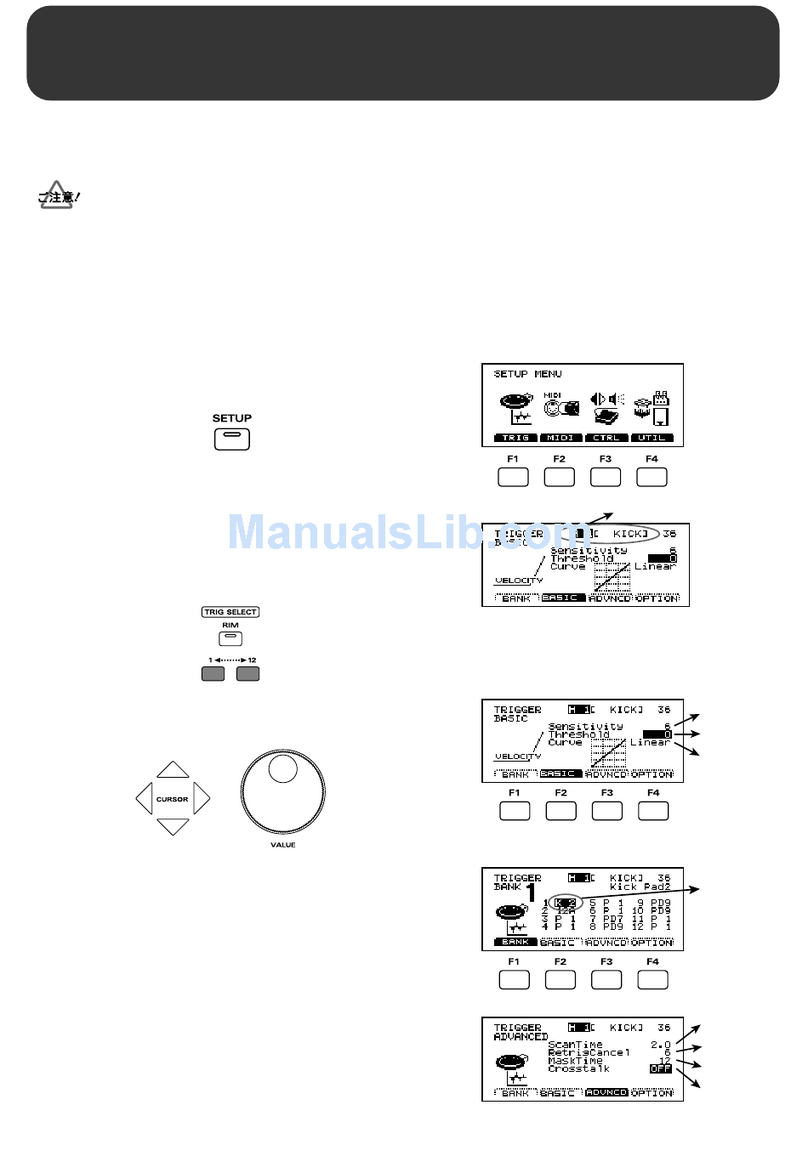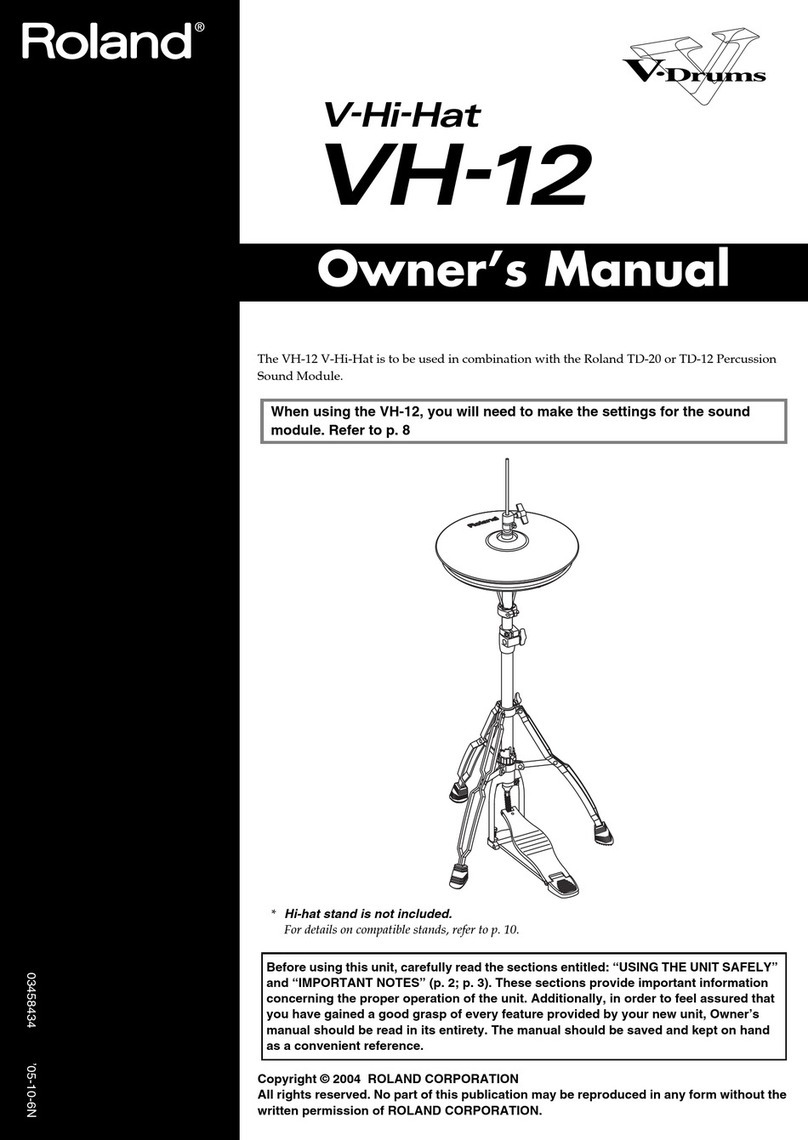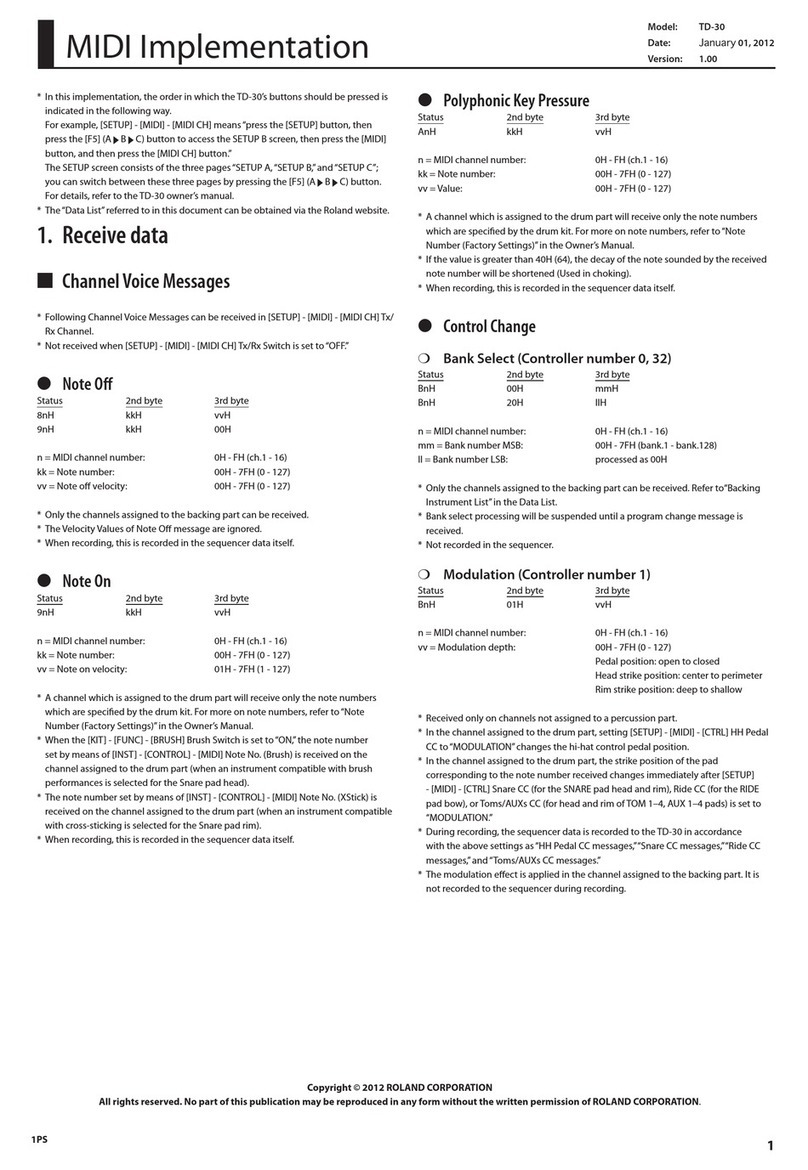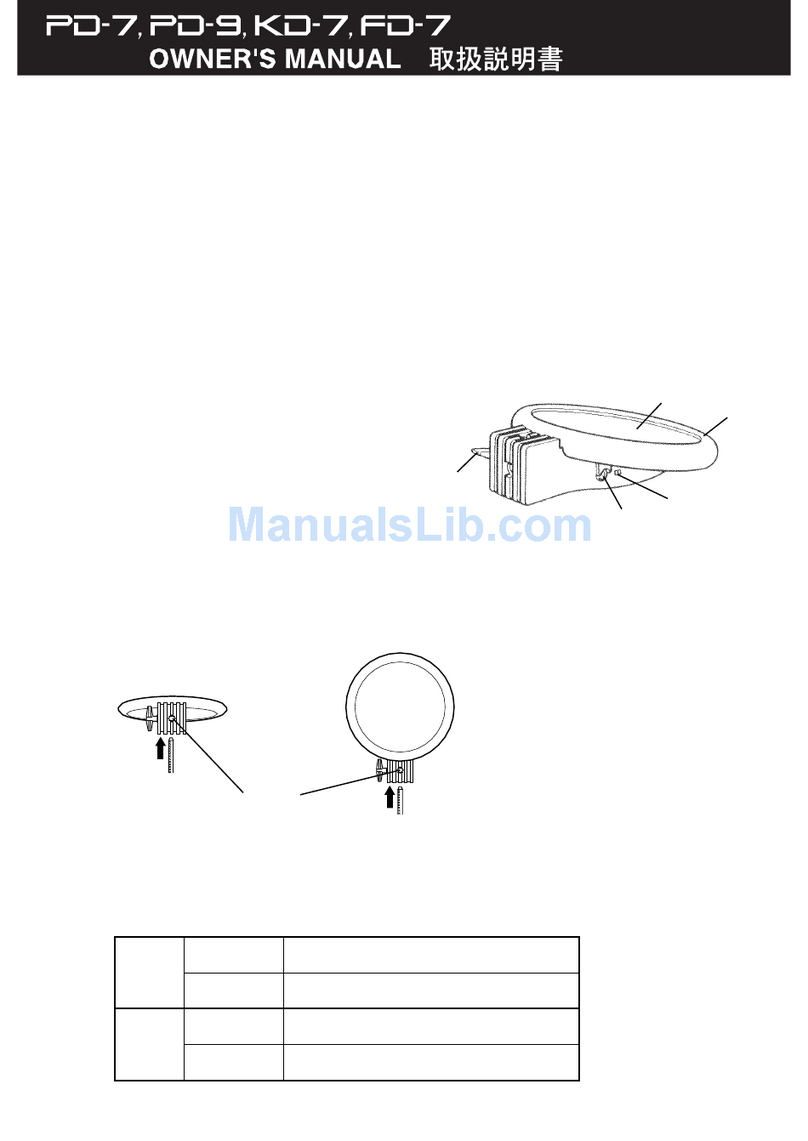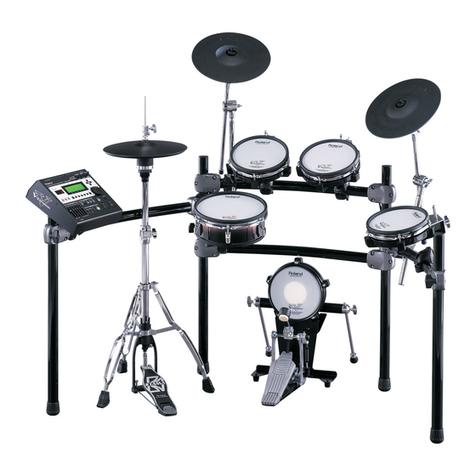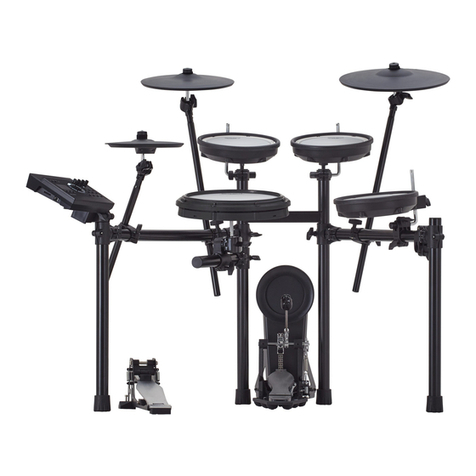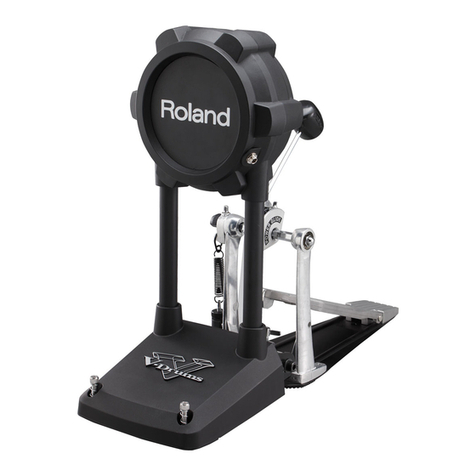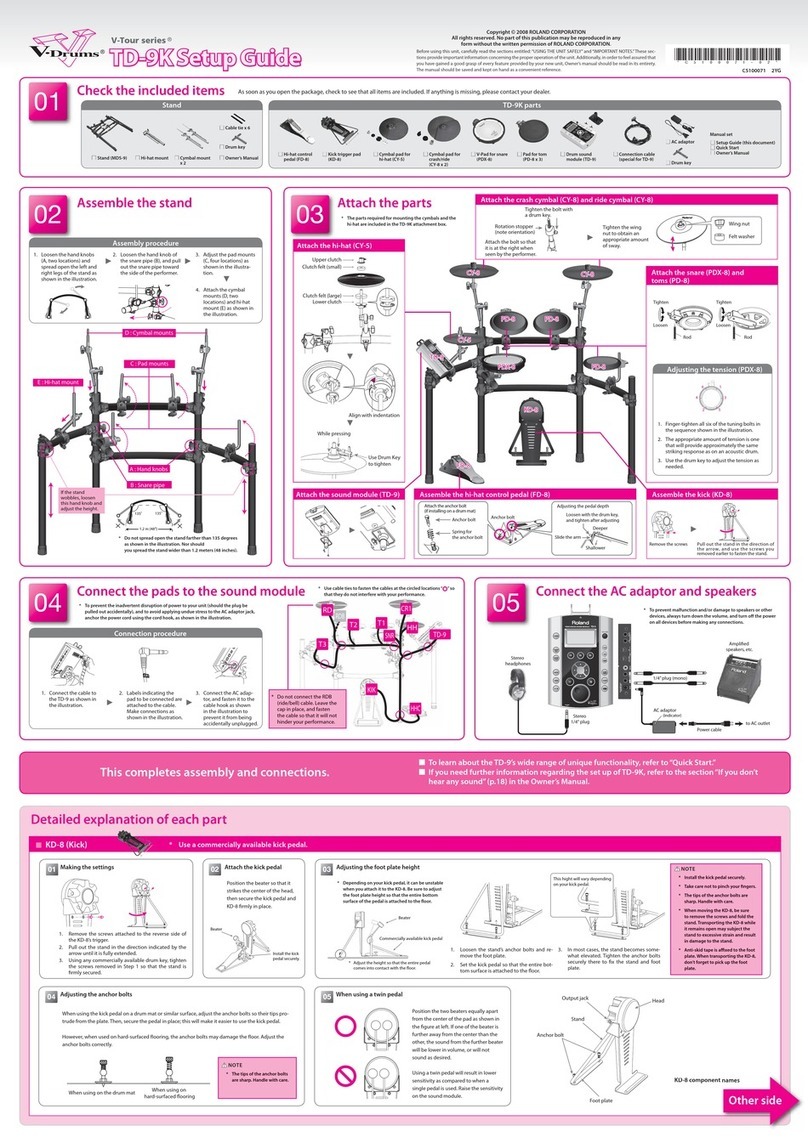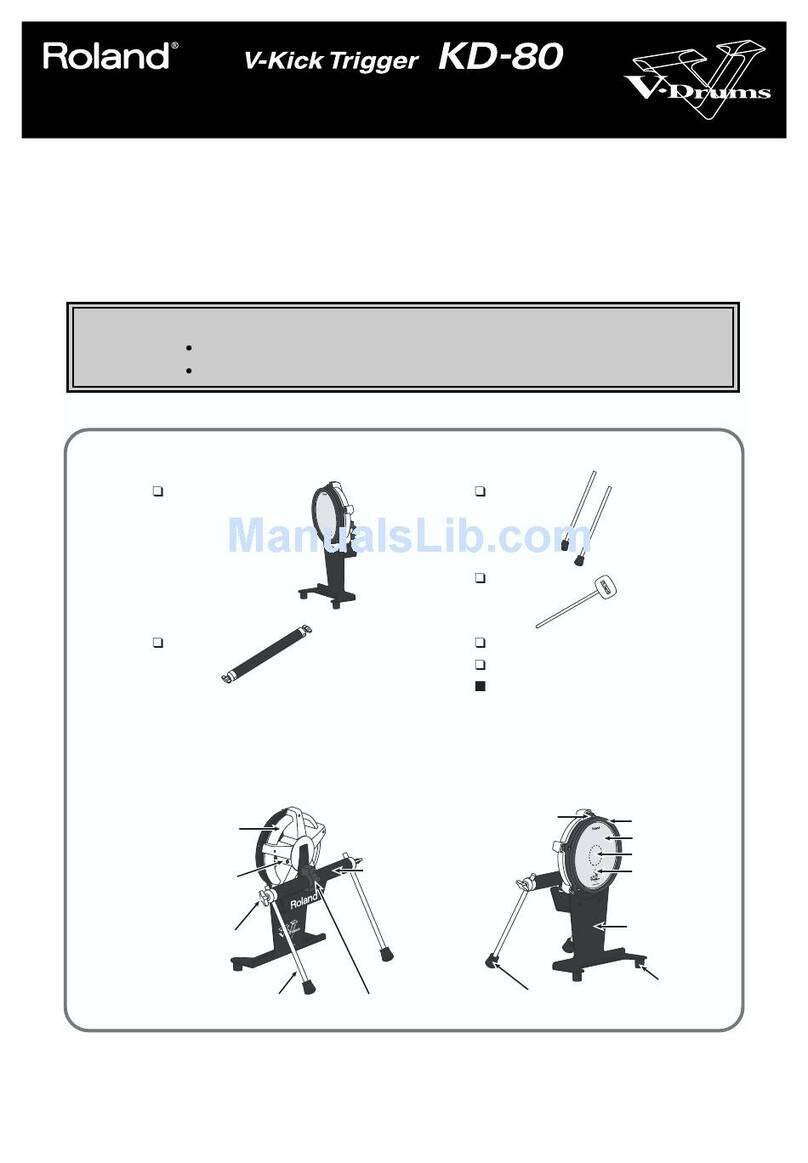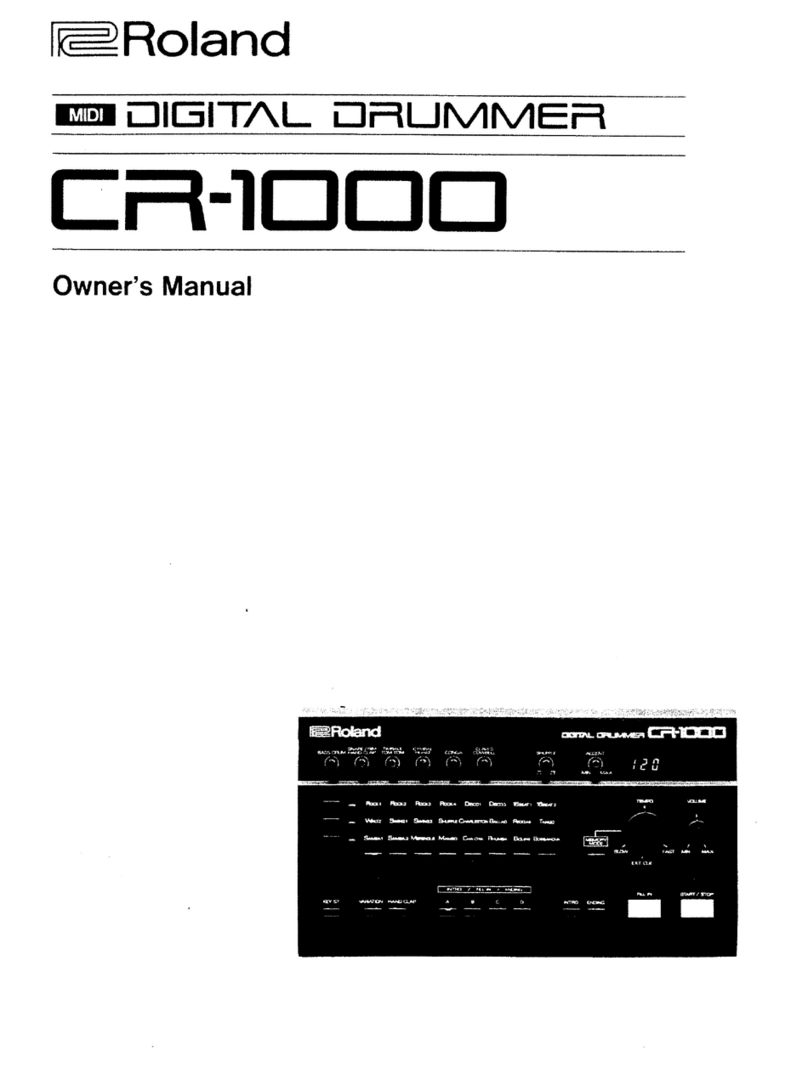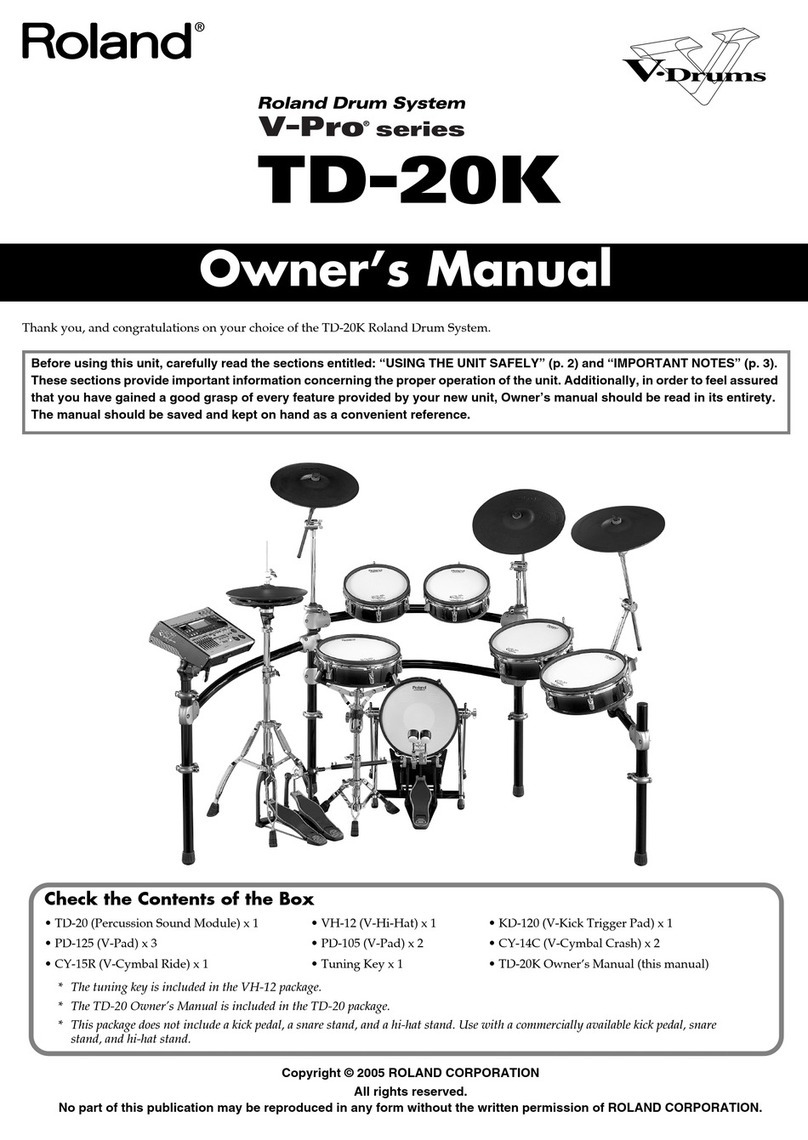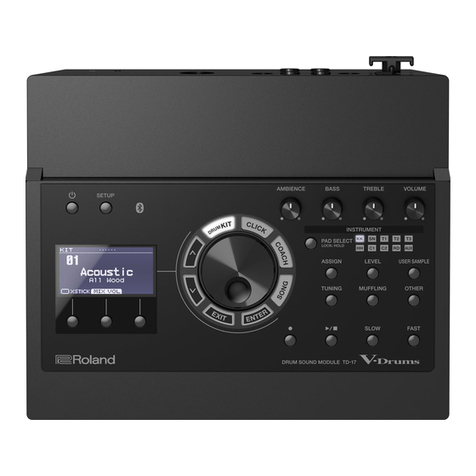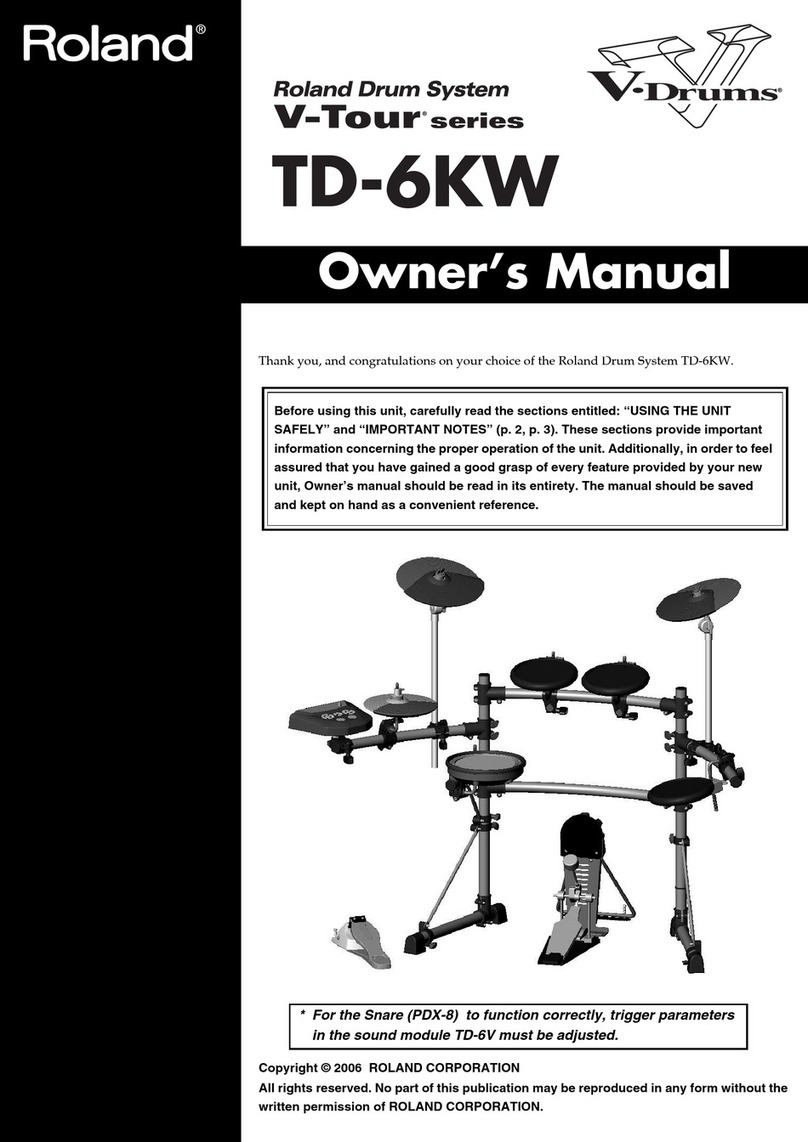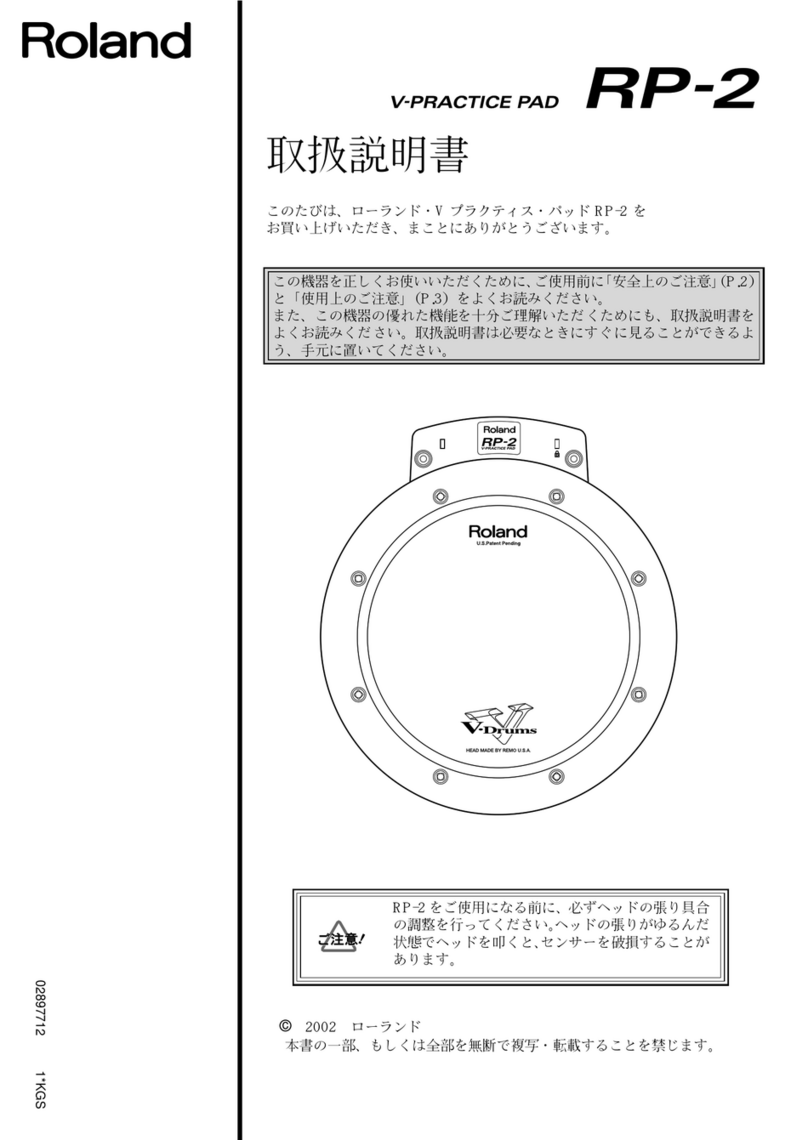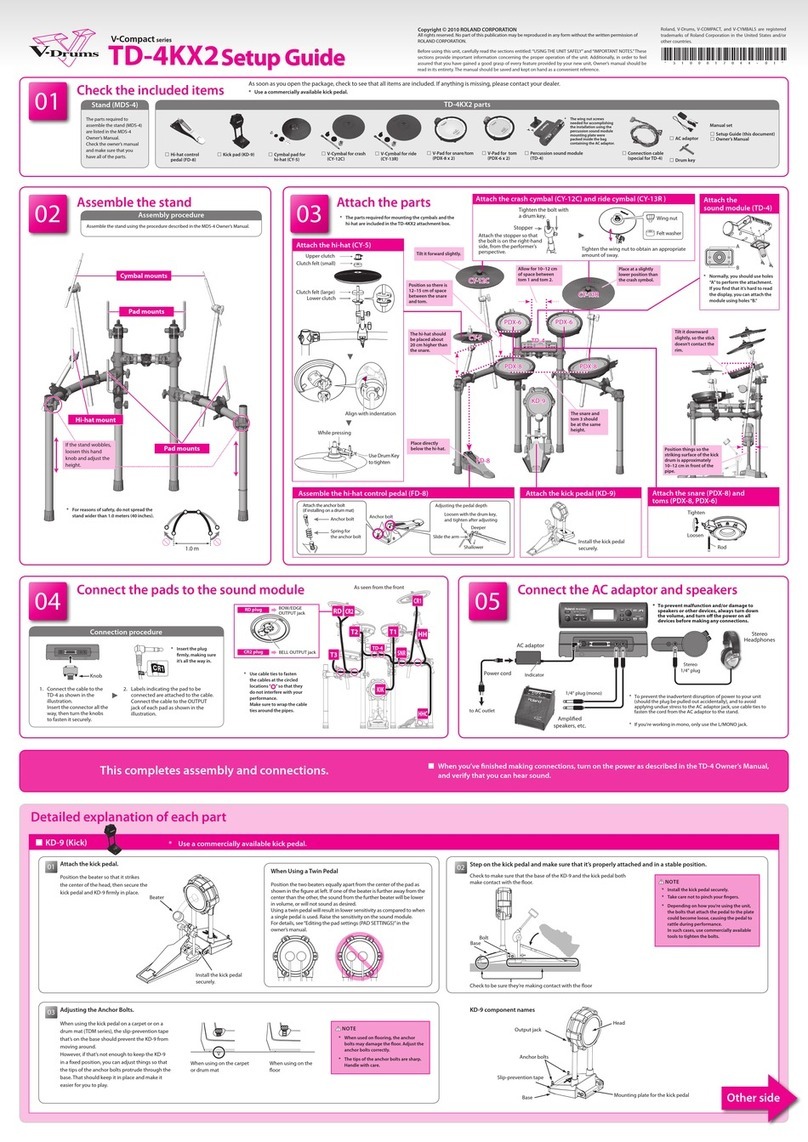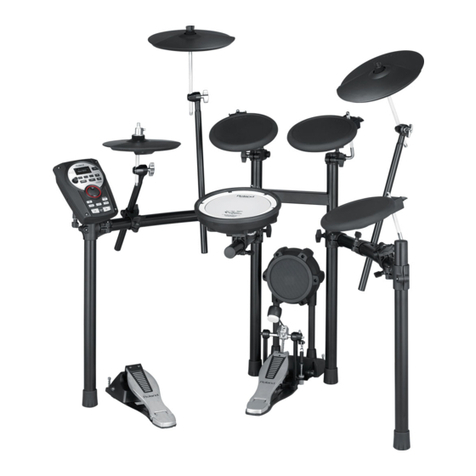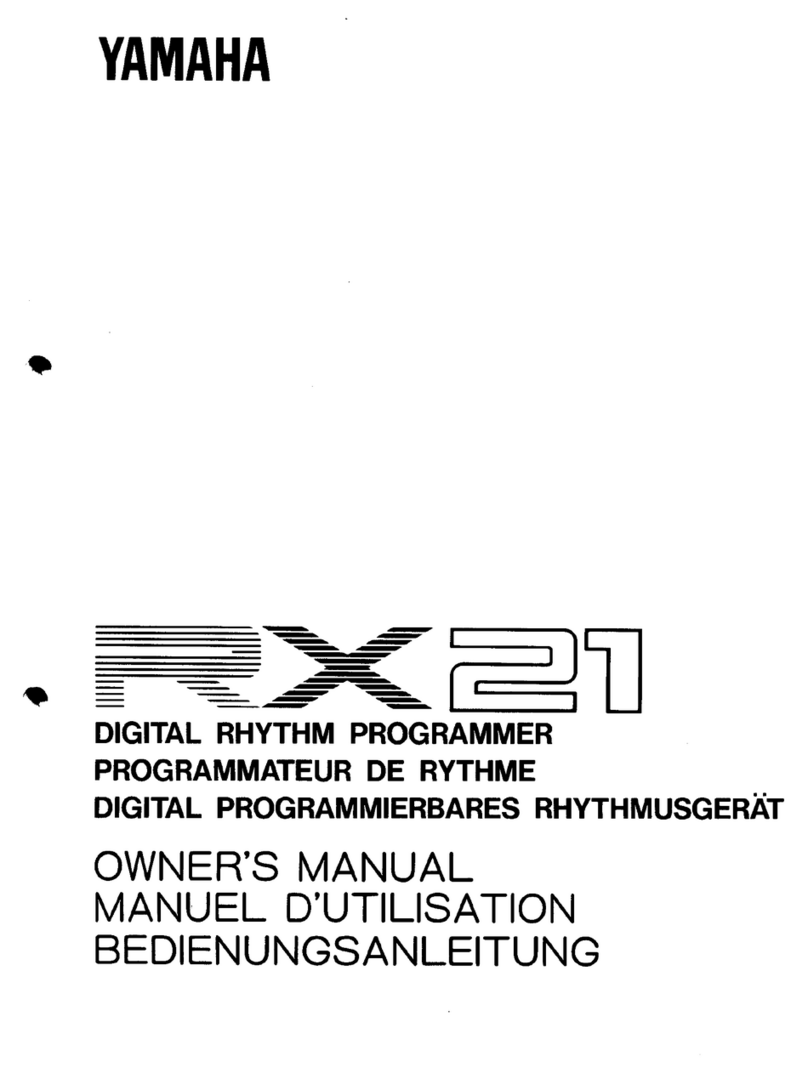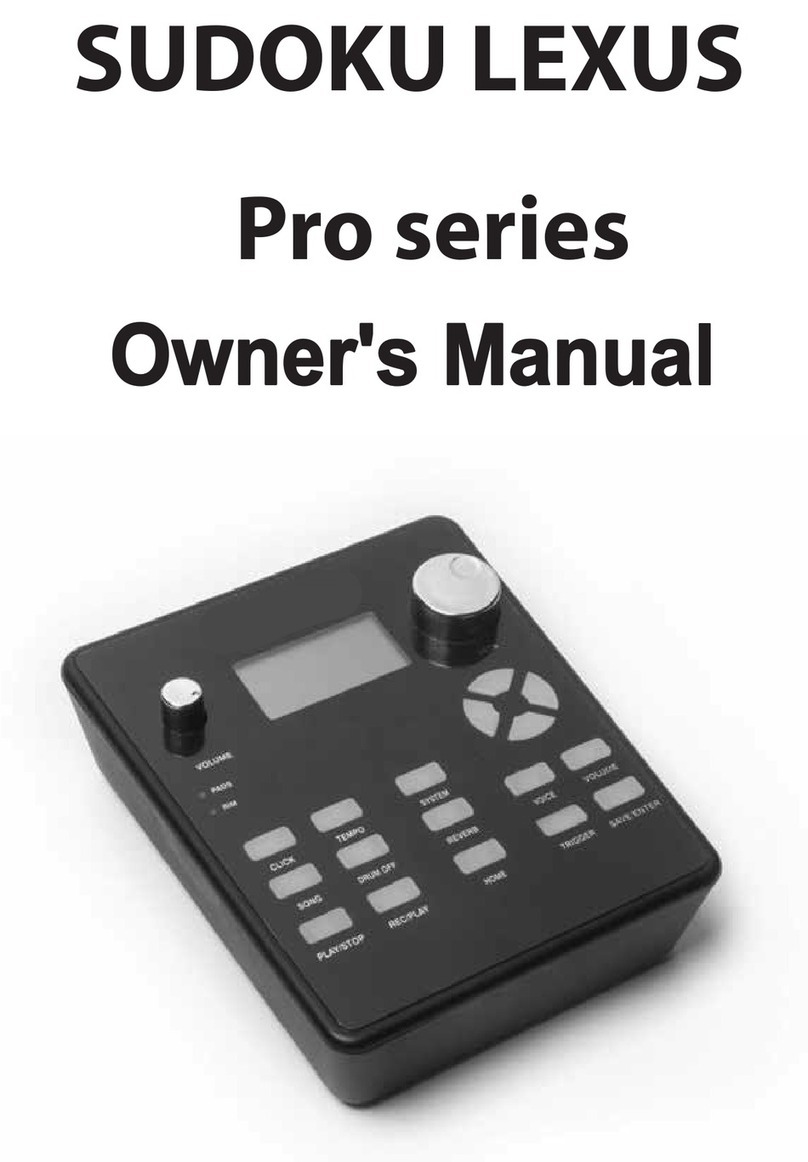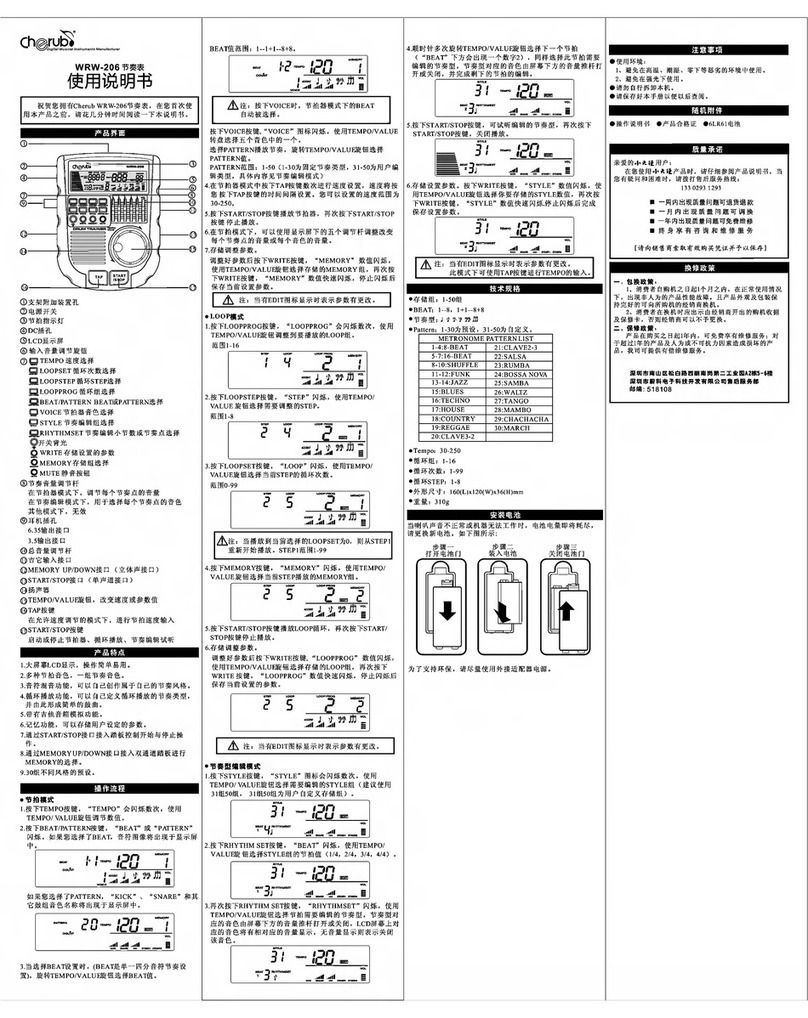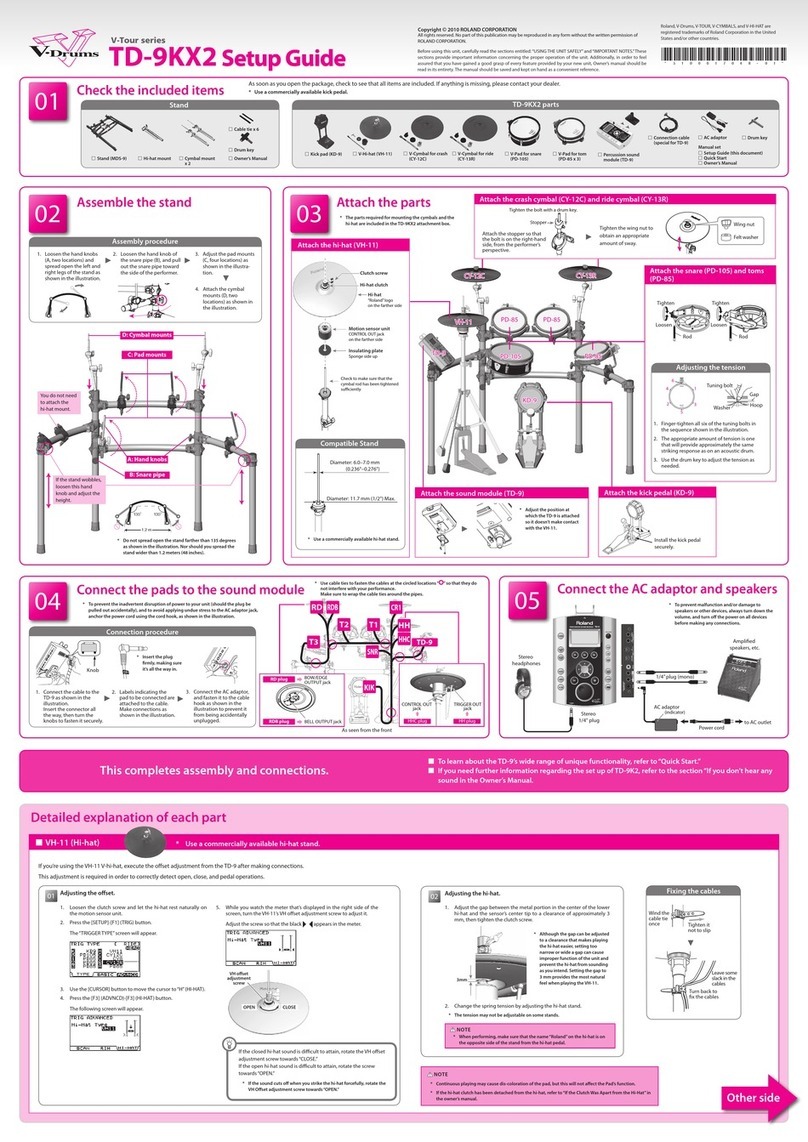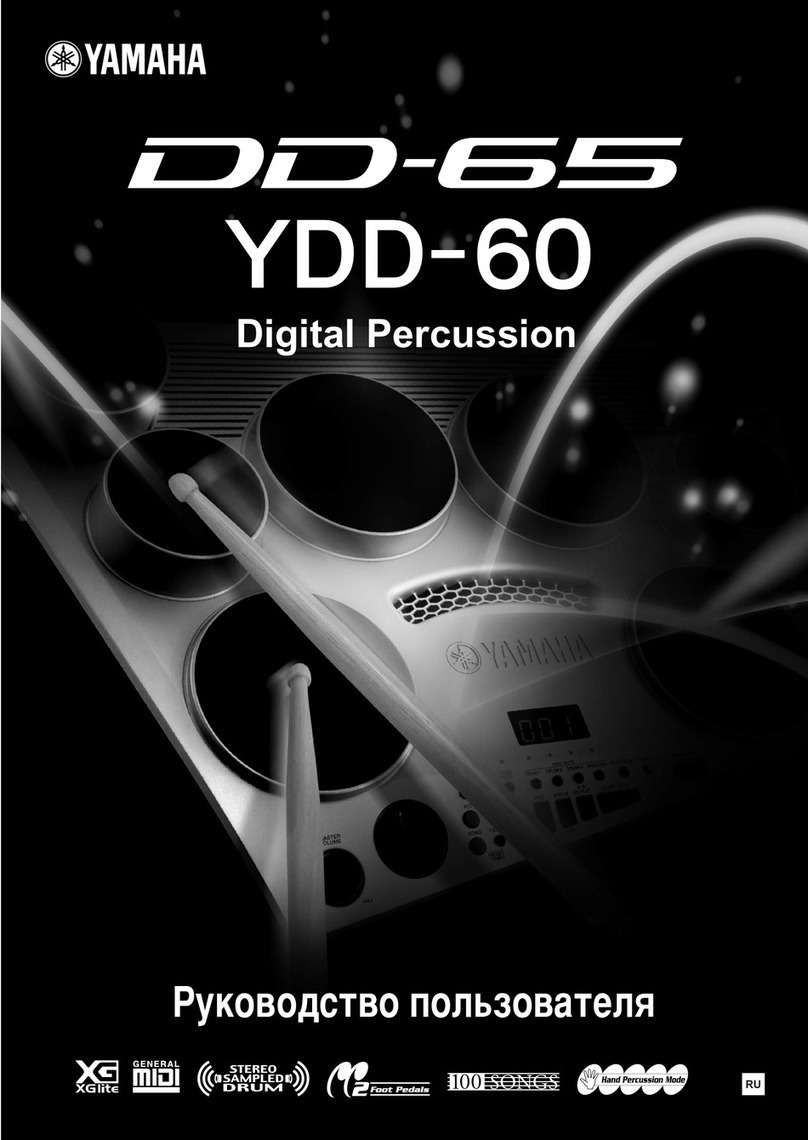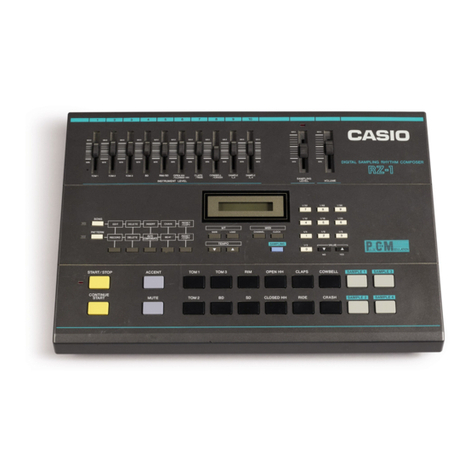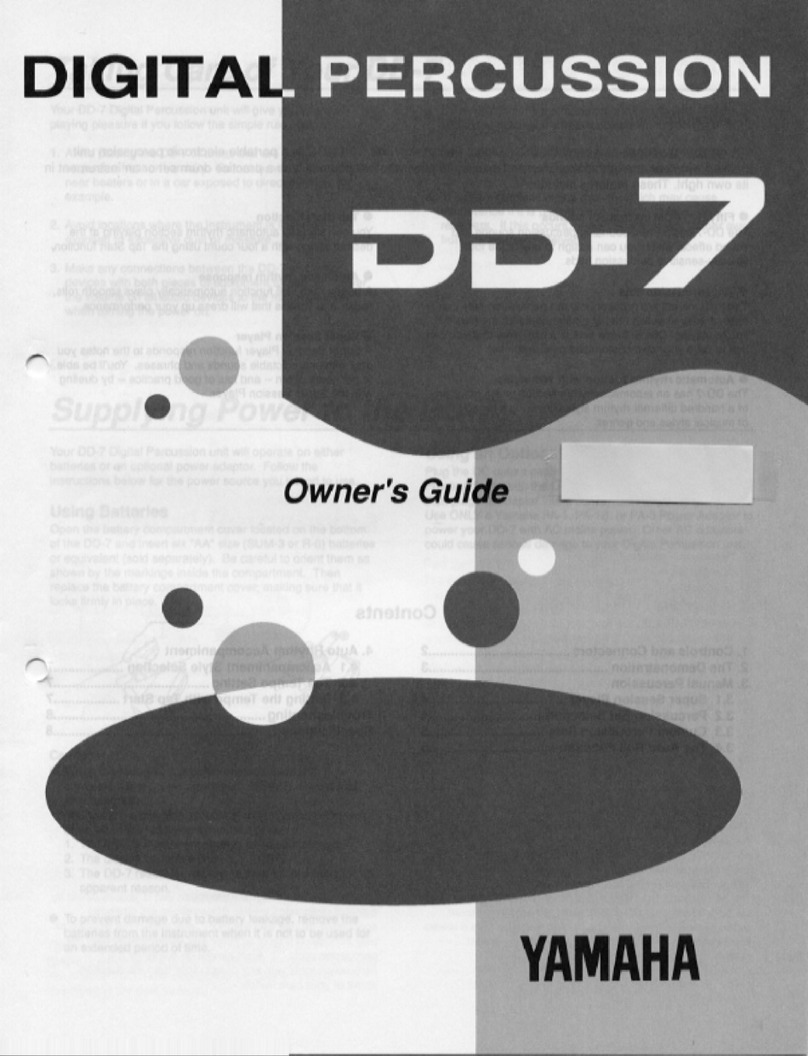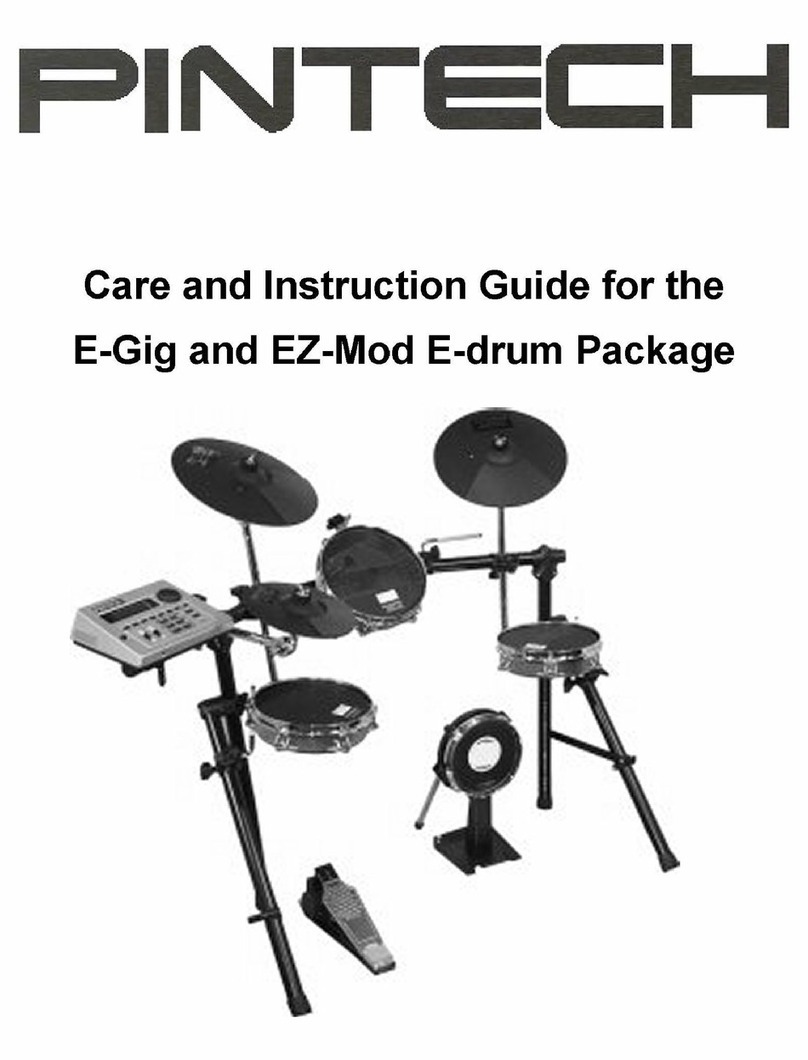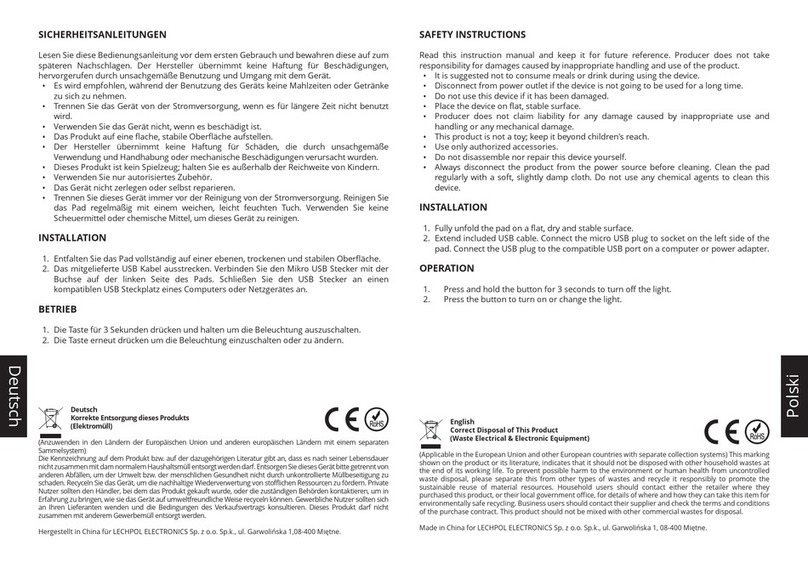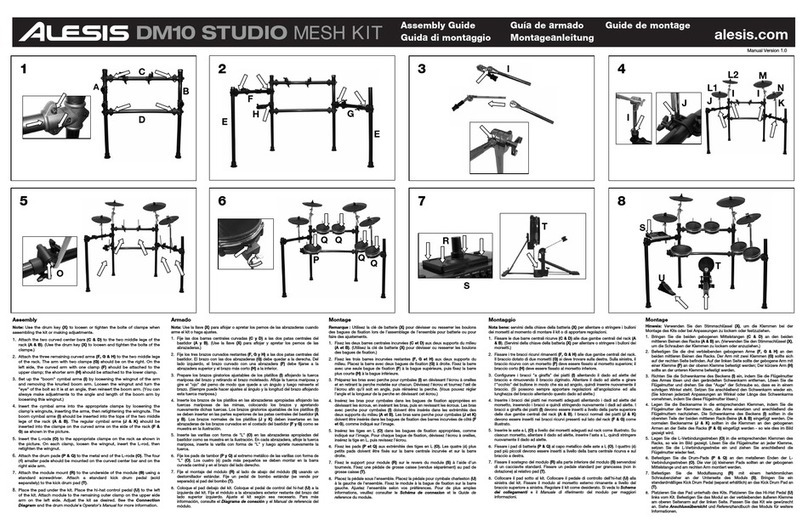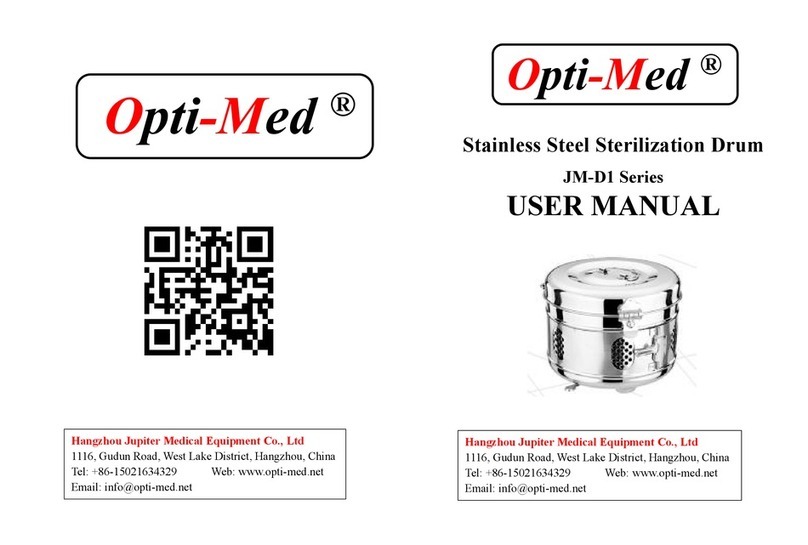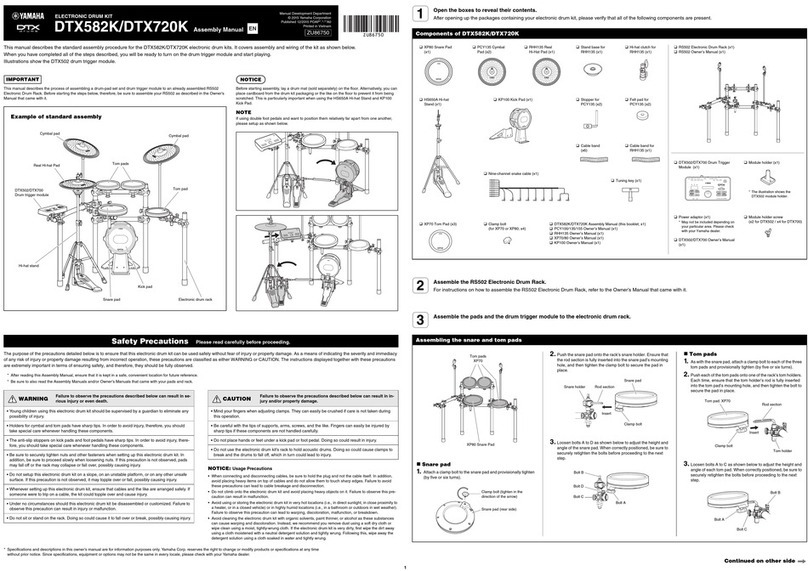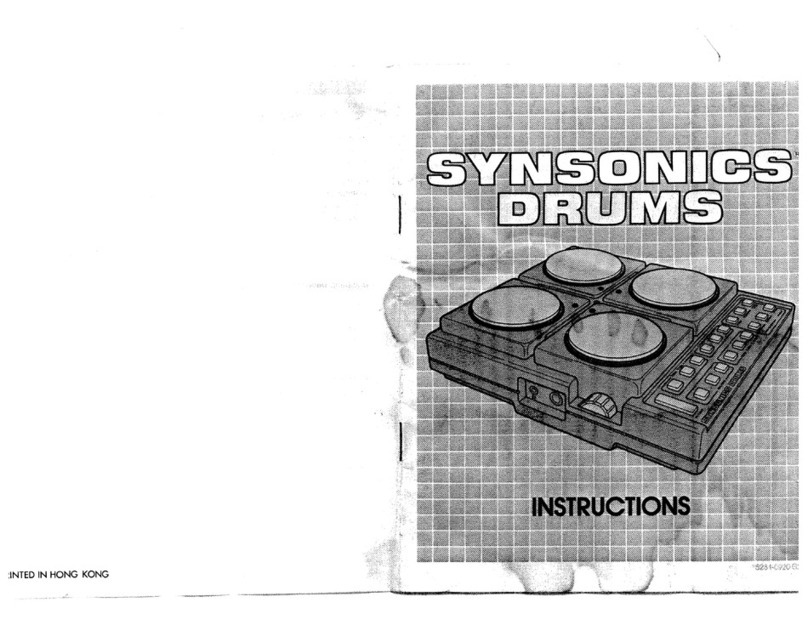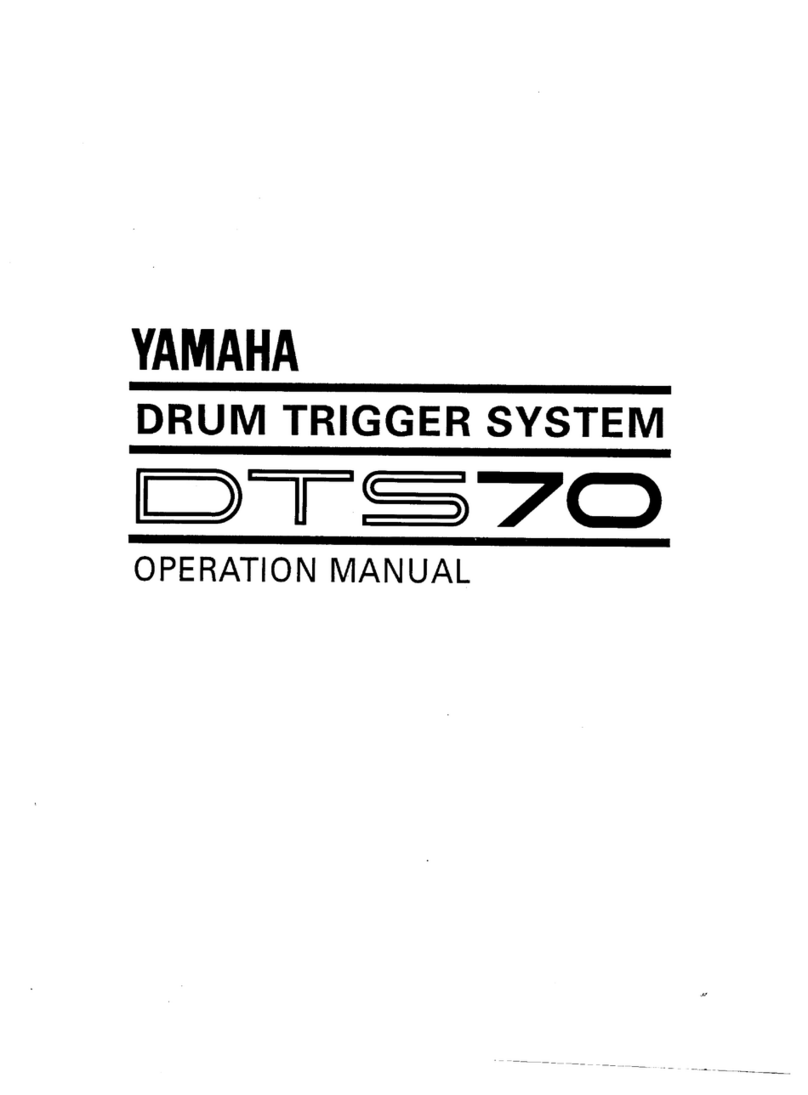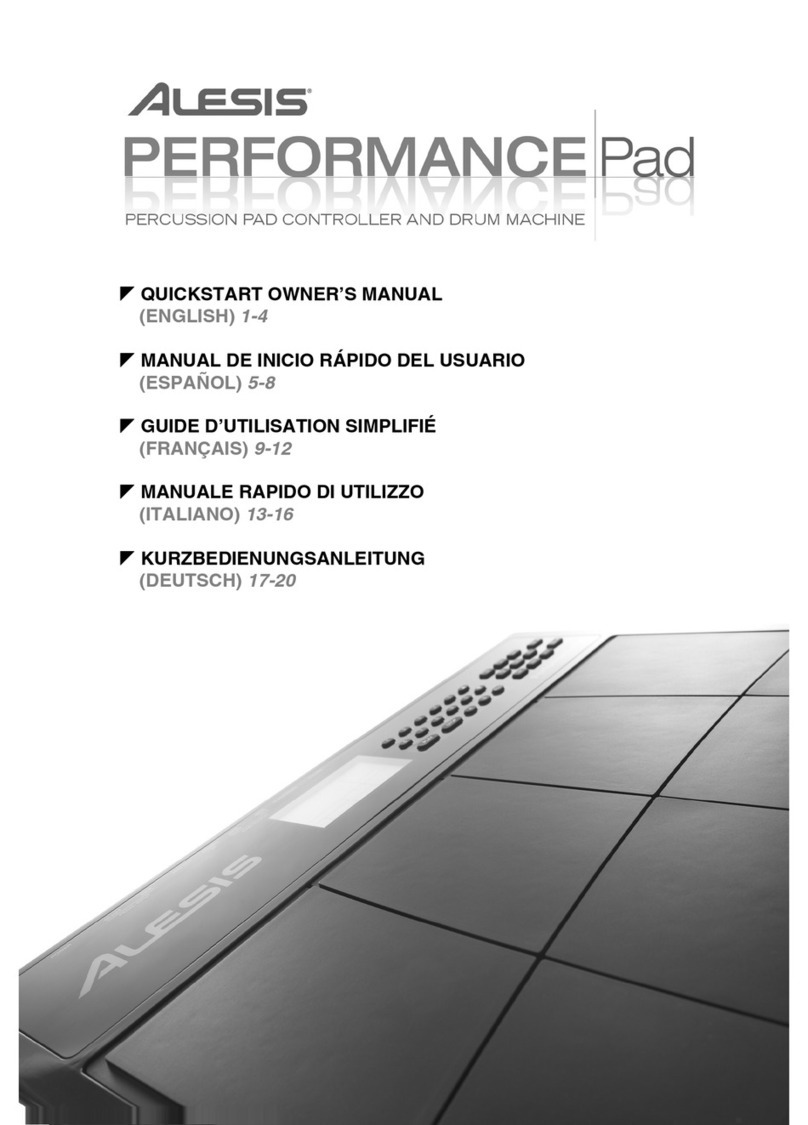
Detailed explanation of each part
9 KD-10 (Kick)
9 PDX-12 (Snare)
9 FD-9 (Hi-hat control pedal)
Adjusting the feeling
9 CY-5 (Hi-hat) 9 CY-8 (Ride/Crash)
NOTE
Continuous playing may cause dis-coloration of the pad, but this will not aect the Pad’s function.
9 PDX-8 (Tom)
Component names
NOTE
5Be sure to adjust the head tension of the pad before use.
5The tom for the TD-07 drum sound module cannot be used to
play rim shots.
CY-8 component namesCY-5 component names
Pad face
Bow
Edge
OUTPUT jack
Pad face
Bow
Edge
OUTPUT jack
Knob bolt
Head
Tuning bolts
OUTPUT jack
Hoop rubber
Shell
Holder
Beater
Install the kick pedal
securely.
Position the beater so that it strikes the
center of the head, then secure the kick
pedal and KD-10 rmly in place.
* A variety of commercially available
beaters can be used, including felt,
plastic, or wood types. However if a felt
beater is used, the felt may leave marks
on the striking surface.
01
Correct positioning Incorrect positioning
02
Check to be sure they’re making contact with the oor
03
When using on the V-Drums mat, noise
eater, or carpet
When using on the oor
Head
OUTPUT jack
Anchor bolts
Slip-prevention tape
Mounting plate for
the kick pedal
Adjusting the head tension
When the unit is shipped from the factory,
this is adjusted fairly loosely. Before use,
adjust the head to a fairly high tension.
1. Use the drum key to adjust each tuning bolt a little at a time, moving in
order from one side to the opposite side as shown in the illustration.
2. Fine-tune the adjustment while continuing to check the pad feel and
response.
* Do not rmly tighten a single tuning bolt by itself. Doing so will make it
impossible to tension the head evenly, and will cause malfunctions.
Adjusting the Anchor Bolts.
If you’re using this unit on a V-Drums mat, on a noise eater
(NE-10), or on carpet, extending the anchor bolts will
secure the unit in place.
However, if that’s not enough to keep the KD-10 in a xed
position, you can adjust things so that the tips of the
anchor bolts protrude through the base. That should keep
it in place and make it easier for you to play.
When Using a Twin Pedal
Position the two beaters equally apart from the center of the pad as shown in
the gure below. If one of the beater is further away from the center than the
other, the sound from the further beater will be lower in volume, or will not
sound as desired.
If you’re using twin pedals, the sensitivity will be lower than when a single
pedal is used. Raise the sensitivity on the sound module.
For details, refer to the “TD-07 Owner’s Manual.”
NOTE
5When used on ooring, the anchor bolts
may damage the oor. Adjust the anchor
bolts correctly.
5The tips of the anchor bolts are sharp.
Handle with care.
Component names
Attach the kick pedal. Step on the kick pedal and make sure that it’s properly attached and
in a stable position.
Check to make sure that the base of the KD-10 and the kick pedal both make contact
with the oor.
Remove one or the other.
You can lighten the feeling by removing
either the left or the right spring.
Take care not to pinch your nger when
removing or installing a spring.
Component names
1. Detach lower hook.
2. Detach upper hook.
To reinstall the spring, attach the upper hook rst.
Fixing the cables
(CY-8)
Adjusting the head tension
1. Use the drum key to adjust each tuning bolt a little at a time,
moving in order from one side to the opposite side as shown in
the illustration.
The appropriate amount of tension is one that will provide
approximately the same striking response as on an acoustic
drum.
2. Make minor adjustments to the tightness as necessary.
NOTE
5Attach the KD-10 and the kick pedal securely.
5Take care not to pinch your ngers.
5Depending on how you’re using the unit,
the bolts that attach the pedal to the plate
could become loose, causing the pedal to
rattle during performance. In such cases, use
commercially available tools to tighten the
bolts.
4 3
2 5
6 1
IMPORTANT NOTES
USING THE UNIT SAFELY
Spring
Toe stopper
OUTPUT jack
Anchor bolt
Link
Secure the cable
in place with the
cable tie
Leave some slack in
the cables
Be sure to make this
small plastic hook
visible from you.
Wind a cable tie
around the pipe and
tighten it in order to
not to slip.
Wind a cable tie around
a cable.
Insert the small plastic hook to a hole
to secure the cable to the cymbal arm.
OUTPUT jack
Tuning bolts
Knob bolt
Hoop rubber
Head Holder
Shell
Component names
18
72
36
54
Tighten
Loosen
CAUTION
Cautions when moving this unit
If you need to move the instrument, take note of
the precautions listed below. At least two persons
are required to safely lift and move the unit. It
should be handled carefully, all the while keeping
it level. Make sure to have a rm grip, to protect
yourself from injury and the instrument from damage.
• Check to make sure the bolts and hand knobs securing the
stand have not become loose. Fasten them again securely
whenever you notice any loosening.
• Disconnect the power cord.
• Disconnect all cords coming from external devices.
• Disconnect the kick pedal.
• Disconnect the connection cable of the kick pad.
• Disconnect the connection cable of the hi-hat control pedal.
Take care so as not to get ngers pinched
When handling the following moving parts, take
care so as not to get ngers, toes, etc., pinched.
Whenever a child uses the unit, an adult should be
on hand to provide supervision and guidance.
• Hi-hat control pedal
• Kick pedal
• Bottom of the cymbal pad (see gure)
Keep small items out of the reach of children
To prevent accidental ingestion of the parts listed
below, always keep them out of the reach of small
children.
• Included Parts
Cymbal nuts
• Removable Parts
Screws
CR2 plug’s cap
Used for instructions intended to alert the
user to the risk of injury or material
damage should the unit be used
improperly.
* Material damage refers to damage or
other adverse effects caused with
respect to the home and all its
furnishings, as well to domestic animals
or pets.
Used for instructions intended to alert the
user to the risk of death or severe injury
should the unit be used improperly.
The symbol alerts the user to things that must be
carried out.The specific thing that must be done is
indicated by the design contained within the circle. In the
case of the symbol at left, it means that the power-cord
plug must be unplugged from the outlet.
The symbol alerts the user to important instructions or
warnings.The specific meaning of the symbol is
determined by the design contained within the triangle.In
the case of the symbol at left, it is used for general
cautions, warnings, or alerts to danger.
The symbol alerts the user to items that must never be
carried out (are forbidden).The specific thing that must
not be done is indicated by the design contained within
the circle. In the case of the symbol at left, it means that
the unit must never be disassembled.
About WARNING and CAUTION Notices About the Symbols
ALWAYS OBSERVE THE FOLLOWING
WARNING
Use only the supplied AC adaptor and the correct
voltage
Be sure to use only the AC adaptor supplied with
the unit. Also, make sure the line voltage at the
installation matches the input voltage specied on
the AC adaptor’s body. Other AC adaptors may use
a dierent polarity, or be designed for a dierent
voltage, so their use could result in damage, malfunction, or
electric shock.
Placement
• Depending on the material and temperature of the surface on
which you place the unit, its rubber feet may discolor or mar
the surface.
Additional Precautions
• This instrument is designed to minimize the extraneous sounds
produced when it’s played. However, since sound vibrations
can be transmitted through oors and walls to a greater degree
than expected, take care not to allow these sounds to become
a nuisance others nearby.
569
• The rubber portion of the striking surface is treated with a
preservative to maintain its performance. With the passage of
time, this preservative may appear on the surface as a white
stain, or reveal how the pads were struck during product
testing. This does not aect the performance or functionality of
the product, and you may continue using it with condence.
• Continuous playing may cause dis-coloration of the pad, but
this will not aect the pad’s function.
• This document explains the specications of the product
at the time that the document was issued. For the latest
information, refer to the Roland website.
Intellectual Property Right
• Roland and V-Drums are either registered trademarks or
trademarks of Roland Corporation in the United States and/or
other countries.
• Company names and product names appearing in this
document are registered trademarks or trademarks of their
respective owners.
* Depending on how the drums are set up and played, some pads might be triggered unintentionally
or one of the pads might not respond when two pads are struck at the same time. In this case,
press the [ ] (SETUP) button on the sound module, select “PAD,”select “ADVANCED,” and adjust the
“XtlkCancel” parameter. For details, refer to “TD-07 Owner’s Manual.”

